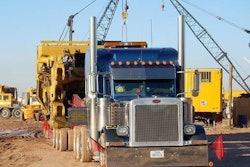
“The railroad industry is spending millions of dollars to block truck weight reform and other trucking productivity efforts, but much of its campaign is predicated on creating appearances that don’t hold up,” said John Runyan, executive director of CTP. “The Coalition Against Bigger Trucks is organized and funded by the rail industry, yet it doesn’t provide transparency or public disclosure of its activities to Congress or even to some of its allies in law enforcement.”
The New York Times article says CABT used former law enforcement officials and other local officials to lobby in Washington, D.C., without disclosing its ties to the rail industry.
“The railroad industry has made truck productivity a ‘truck-vs.-rail’ issue,” says Runyan. “The reality is that shippers prefer to use rail whenever they can, but they need safe solutions to mitigate the current trucking capacity crisis that is challenging U.S. companies and motorists alike,” referring to a size and weight limit increase.
CTP in recent weeks also has taken aim at what it calls “detractors” to the Congressionally required study on increasing truck size and weight limits. The group penned a letter to DOT Secretary Anthony Foxx last month with its concerns:
“DOT has taken several steps to conduct the study, and we appreciate DOT’s focus on the issue…as we noted in letters last Congress, there appeared to be conflicts of interest in the selection of the study’s contractor and the bases of its findings on flawed data and poor methodology,” a group of Congressmen wrote to Foxx. “These issues must be addressed and corrected. It is troubling that DOT could release a study that recommends bigger, heavier trucks that will lead to more potholes and even greater problems – like safety risks, environmental damage, and economic harm – not to mention higher expenses to maintain our infrastructure. For these and so many other reasons, DOT needs to fix the fatal flaws inherent in the study that is now underway.”
CTP is urging the DOT to quickly complete its required study on the effects of truck size and weight increase. The DOT announced in December a delay in its release of the report required by MAP-21, saying it would miss the deadline set by the 2012 highway funding law.
“The reality is that existing research and empirical evidence overwhelmingly favor the safety and efficiency of more productive six-axle trucks,” Runyan said. “Despite voluminous existing research, trucking opponents proposed this study in 2012 so they could delay reform, but unfortunately for them, the facts haven’t changed. What we’re seeing is proof that truck weight reform opponents are simply afraid of the facts.”
In recent years in Congress, multiple bills dealing with size and weight have been introduced, ranging from those freezing current limits to those allowing states to set their limits to 97,000 pounds.
The American Trucking Associations supports an increase in the limits, while driver groups, such as the Owner-Operator Independent Drivers Association and the Teamsters Union, oppose such measures.














